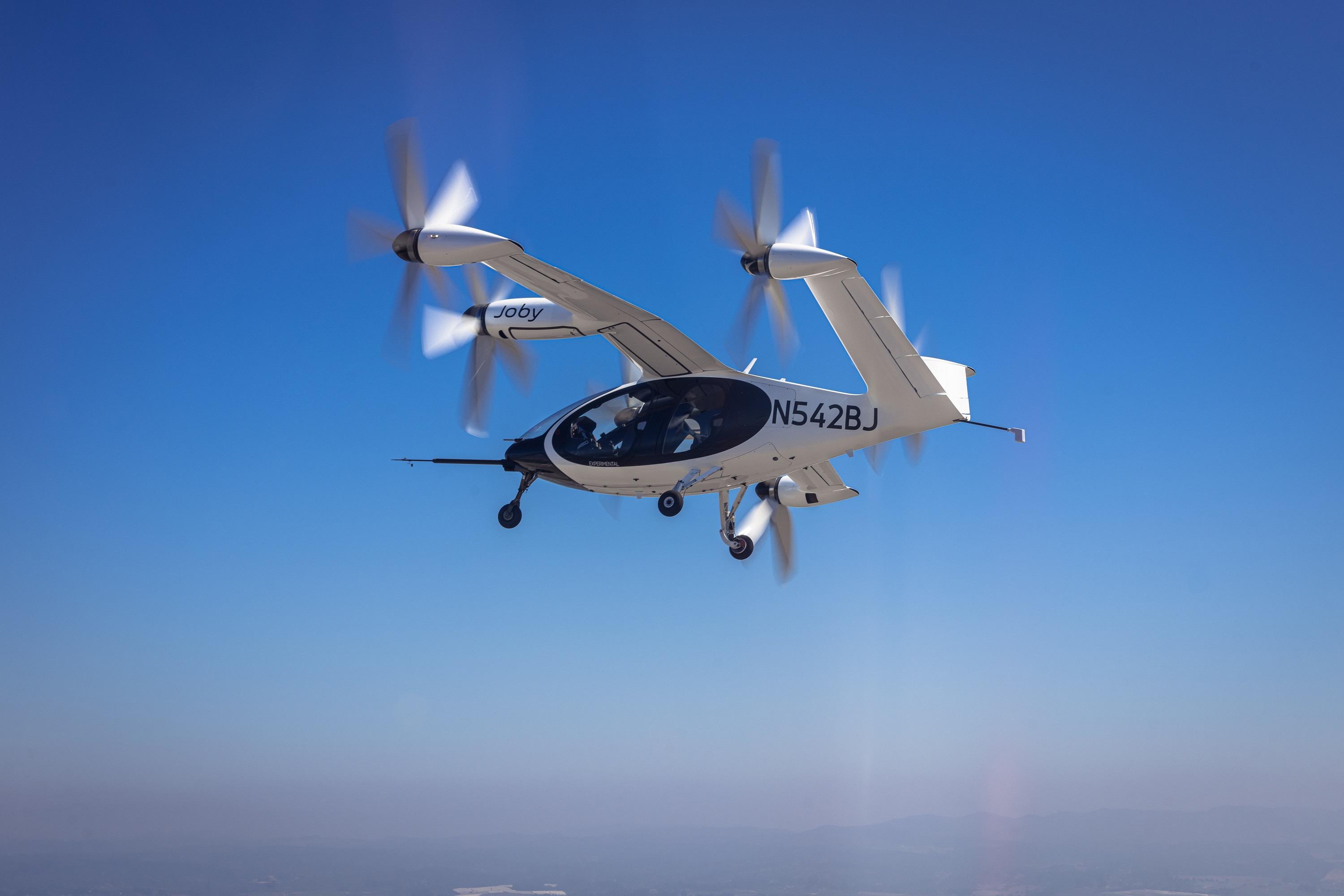
Joby expects to complete FAA approval of its means of demonstrating compliance with certification requirements by the end of 2022.
After a long wait, the FAA has published its proposed airworthiness criteria for Joby Aviation’s JAS4-1, providing the first detailed look at the certification basis for an electric vertical-takeoff-and-landing (eVTOL) powered-lift aircraft.
Eagerly awaited by the wider industry, the proposed airworthiness criteria were published in the Federal Register on Nov. 8, four years after Joby applied for type certification of its piloted four-passenger tiltprop and six months after the FAA changed course on certifying eVTOL aircraft.
Joby was first to sign a G-1 certification basis with the FAA, in May 2020, under Part 23 regulations for fixed-wing airplanes. But in May this year, the FAA decided instead to certify eVTOLs as a special class of powered-lift aircraft under Part 21.17(b). Joby signed a revised G-1 in July.
Because the JAS4-1 was not certified within three years, as required, the FAA approved Joby’s request for an extension and the date of the updated certification basis is June 2022. Joby is targeting approval by the end of 2024, but that could slip into 2025, when it plans to begin commercial service.
The certification basis is largely based on Part 23 with Part 33 for engines and Part 35 for propellers, but includes new performance-based criteria developed by the FAA, “because no existing standard captured the powered-lift [aircraft’s] transitional flight modes,” the notice says.
The proposed criteria include definitions specific to a powered-lift aircraft, such as flight modes, configurations and speeds, as well as electric engine and related propeller airworthiness standards.
In the event of a loss of power, airplanes can glide and rotorcraft autorotate to a safe landing, but not all powered-lift aircraft have these capabilities. For the JAS4-1, the FAA proposes a unique definition for continued safe flight and landing, and for controlled emergency landing, to ensure the vehicle has performance equivalent to a glide or autorotation.
For vertical takeoff and landing, the proposed airworthiness criteria are drawn from Parts 27 and 29 for rotorcraft, with changes to allow for safe operation of the powered-lift aircraft below the stall speed of the wing. The FAA has also developed proposed criteria to address the eVTOL’s alternating sources of lift: thrust-borne, semi-thrust-borne and wing-borne.
Joby’s tiltprop design uses distributed electric propulsion to provide lift, thrust and control, which requires new airworthiness criteria to address the integrated flight and propulsion control system.
Proposed criteria for distributed propulsion also address multi-engine isolation, simplified control and energy-system crashworthiness. Revised powerplant control criteria combine engine and propeller control as well as nacelle rotation. Fire-protection criteria delete requirements specific to liquid fuels but address all powerplant-related fire threats.
Additional structural design criteria are required to address the aerodynamic loads on an eVTOL that transitions between vertical and forward flight, the FAA says. And because the JAS4-1 is expected to spend less time in hover than a rotorcraft, and more in high-speed flight, bird-strike risk is increased.
The JAS4-1 also will be quieter than a helicopter, giving birds less warning, so the FAA is proposing a more comprehensive bird-strike requirement for an aircraft-level evaluation against a 1-kg (2.2-lb.) bird impact. The regulator also proposes a requirement for bird-deterrence devices to reduce strikes.
Among the special features of the Joby propulsion system noted in the proposed criteria include the electric engine, which comprises four motors: the drive motor plus motors for propeller pitch, engine tilt and the cooling system. The propeller needs new criteria because the electric blade-pitch actuation is more extensively integrated into the aircraft’s propulsion and flight- control system.
The proposed airworthiness criteria do not call out any obvious changes to the safety levels in Part 23 but require the aircraft to be capable of continued safe flight and landing following failures, including loss of thrust, not shown to be extremely improbable.
In Part 23 aircraft, “extremely improbable” typically equates to a probability of catastrophic failure of 10-7 or 10-8.
The FAA notes the JAS4-1 is not a Level 4 commuter-category aircraft, which would require the same 10-9 safety level as commercial aircraft. European SC-VTOL rules for eVTOLs specifically require a 10-9 safety level for commercial passenger operations.





